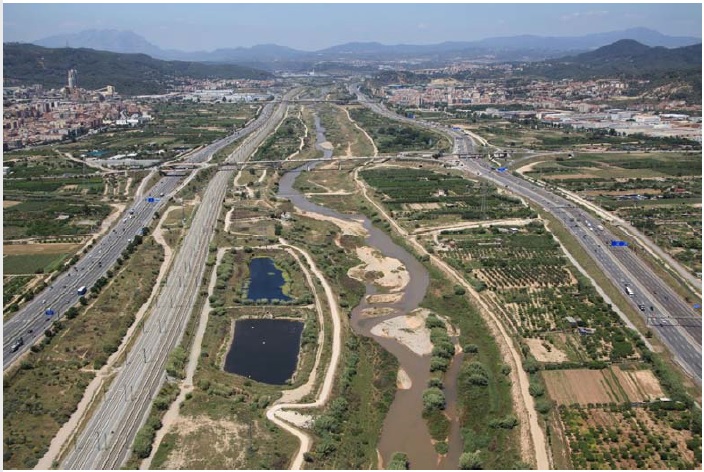
CLEARING HOUSE City representatives discuss conflicts of interest in urban forestry settings
To share experiences and challenges faced when working with different stakeholders on the topic of urban forestry as nature-based solutions (NBS), city representatives from the CLEARING HOUSE project met online, focussing on the broad topic of conflict of interest. To kick-start the discussions, each city representative shortly presented the most prominent dissidence they experience in their city.
From Krakow to Barcelona, an overview of European cities
First on, Tomasz Bergier, from the city of Krakow, highlighted the system of blue-green infrastructure that characterises the city and plays an important role for both society and nature. He introduced a new programme with eco-friendly infrastructure that intends to attract citizens to the green areas whilst at the same time reviving the river parks.
The main conflicts of interest he sees in his city are either:
- Human vs. Nature: the risk to lose natural value when opening the so far not-so-easy-to-access natural habitats
- Public vs. Private interests among users. In Krakow, the river park area is divided in two zones: a protection zone where nature is the priority and only a maximum of 10% may be covered by pavements, etc., and a second zone where it is planned to build playgrounds etc.
The next city was Barcelona by Eugenia Vidal-Casanovas. The Metropolitan Area of Barcelona is the largest metropolitan area in the Mediterranean. The river Llobregat flowing south of the city centre is a typical river of the Mediterranean climate region with flow regimes reflecting precipitation patterns and frequent floods. The river has been exploited by agriculture, industry, and residents alike, therefore its water quality is not great. It passes through 16 municipalities which make its management difficult. Moreover, the increase of large infrastructure such as motorways and high-speed train tracks have dramatically reduced the riverbed’s size.

There are several projects targeting environmental and social recovery along the river and the coexistence of infrastructure and services. As environmental recovery faces challenges such as loss of biodiversity and low water tables, it has become apparent that nature-based solutions are the way to go. Yet, not without challenges. There is high demand for the river’s ecosystem services, however, the low water table and the water quality pose challenges. There are restrictions to planting trees along the river, and investments are often targeted at societal use without looking at the environmental impact. As a result, the project team from Barcelona found that more knowledge in relation to NBS is needed, especially regarding its costs, application, and benefits.
Next on, Fabien Genart from Brussels Environment shared his experiences from the Belgian capital. He introduced three main topics, each with their respective challenges and potential solutions.
- Urbanisation and Urban planning: The city has experienced considerable population growth, combined with space scarcity and a clash between political goals and nature conservation.
- Roads and infrastructure: As Brussels is both a city of business, tourism and leisure, there are many different transportations means and users profiles, each with different needs and interests that need to be channelled.
- Administration and politics: Due to its different regions and municipalities, some of Brussels’ areas are difficult to manage. Legislation, implementation, funding and maintenance are often dispersed across several instances, and shared by groups of different interests.

Completing the round of presentations, Norman Rudgalwis presented the case of Gelsenkirchen in Germany, where climate change and its impact on urban trees is seen as the main issue. Gelsenkirchen has experienced 3 years of drought, exacerbated by storms and pathogens. The decline of urban trees is measured at 25% and estimated to reach 50% in the future. Thus, the city has identified the need to plant new trees as well as protect existing stands in its effort to make the city sustainable and resilient.
How can we evaluate the true value of trees?
Arising conflicts concern competition of land use: green spaces vs. infrastructure and the clash between commercial and residential areas. This is when the topic of the (monetary) value of trees came up. Can urban trees maybe compensate the loss of large companies moving away and the resulting unemployment? Can we calculate the value of trees and weigh it up against the trade-offs their protection comes with?
This idea of assigning (monetary) values to trees had also been taken up in Krakow where signs were put on trees that said: “I clean XY litres of water”, “I clean the air from XY cars” etc. Lukas Mielczarek then mentioned the Life UrbanGreen project which calculates ecosystem service for trees species (storage of CO2, cooling effect etc.) to quantify ecosystem services.
Before parting, the group decided to dive deeper into the topic of the value of trees and the ecosystem services they provide in the next meeting. It will be held in April, first with two short presentations of projects already looking at the value of trees and then time for discussions, exchanging thoughts and ideas and brainstorming solutions and approaches.
Author: Christiane Düring from European Forest Institute
EFI provides forest-related knowledge around three interconnected and interdisciplinary themes: bioeconomy, resilience and governance and is a CLEARING HOUSE partner.
